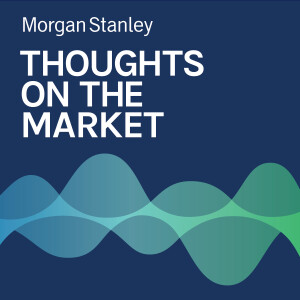
Andrew Sheets: What is an Optimal Asset Allocation?
 2023-01-20
2023-01-20
The financial landscape is filled with predictions about what comes next for markets, but how do investors use these forecasts to put a portfolio together?
----- Transcript -----
Welcome to Thoughts on the Market. I'm Andrew Sheets, Chief Cross-Asset Strategist for Morgan Stanley. Along with my colleagues, bringing you a variety of perspectives, I'll be talking about trends across the global investment landscape and how we put those ideas together. It's Friday, January 20th at 2 p.m. in London.
The financial landscape is filled with predictions about what markets will do. But how are these predictions used? Today, I want to take you through a quick journey through how Morgan Stanley research thinks about forecasting, and how those numbers can help put a portfolio together.
Forecasting is difficult and as such it's always easier to be more vague when talking about the future. But when we think about market expectations, being specific is essential. That not only gives an expectation of which direction we think markets will go, but by how much and over a specific 12 month horizon.
Details here can also really matter. For example, making sure you add dividends back to equity returns, adjusting bond forecasts for where the forwards are, and thinking about all asset classes in the same currency. In this case, U.S. dollars.
Consistency in assumptions is another factor that is difficult but important. We try to set all of our forecasts to scenarios from our global economics team. That is more likely to produce asset class returns that are consistent with each other and to the economy we expect.
With these returns in hand, we can then ask, "what's an optimal asset allocation based on our forecasts?" Now, everyone's investment objectives are different. So in this case we'll define optimal as a portfolio that will generate higher returns than a benchmark with a similar or better ratio of return to volatility. This type of analysis will consider expected return and historical risk, but also how well different asset classes diversify each other.
As Morgan Stanley's forecasts currently stand this approach suggests U.S. equities are relatively unattractive. Sitting almost exactly at the year end price target of my colleague Mike Wilson, our U.S. Equity Strategist, expected returns are low, while volatility is high and U.S. stocks offer minimal benefits for diversification. Stocks in Japan and emerging markets look better by comparison.
But the real winner of this approach continues to be fixed income. Morgan Stanley's rate strategists in the U.S. and Europe continue to think that moderating inflation in 2023 will help bond yields either hold around current levels, or push lower, resulting in returns that are better than equities with less volatility. Our expected returns for emerging market bonds are also higher, with less volatility than U.S. and European stocks.
Forecasting the future is difficult, and it's very possible that either our market forecasts or the economic assumptions to back them will be off to some degree. Still, considering what is optimal based on these best estimates, is a useful anchor when thinking about strategy. And for the moment, this still favors bonds over stocks.
Thanks for listening. Subscribe to Thoughts on the Market on Apple Podcasts, or wherever you listen, and leave us a review. We'd love to hear from you.
More Episodes
 2024-08-19
2024-08-19
 2024-08-16
2024-08-16
 2024-08-13
2024-08-13
 2024-08-12
2024-08-12
 2024-08-09
2024-08-09
 2024-08-08
2024-08-08
 2024-08-05
2024-08-05
 2024-08-02
2024-08-02
 2024-08-02
2024-08-02
 2024-07-31
2024-07-31
 2024-07-30
2024-07-30
 2024-07-29
2024-07-29
 2024-07-26
2024-07-26
 2024-07-25
2024-07-25
Create your
podcast in
minutes
- Full-featured podcast site
- Unlimited storage and bandwidth
- Comprehensive podcast stats
- Distribute to Apple Podcasts, Spotify, and more
- Make money with your podcast
It is Free
- Privacy Policy
- Cookie Policy
- Terms of Use
- Consent Preferences
- Copyright © 2015-2024 Podbean.com




